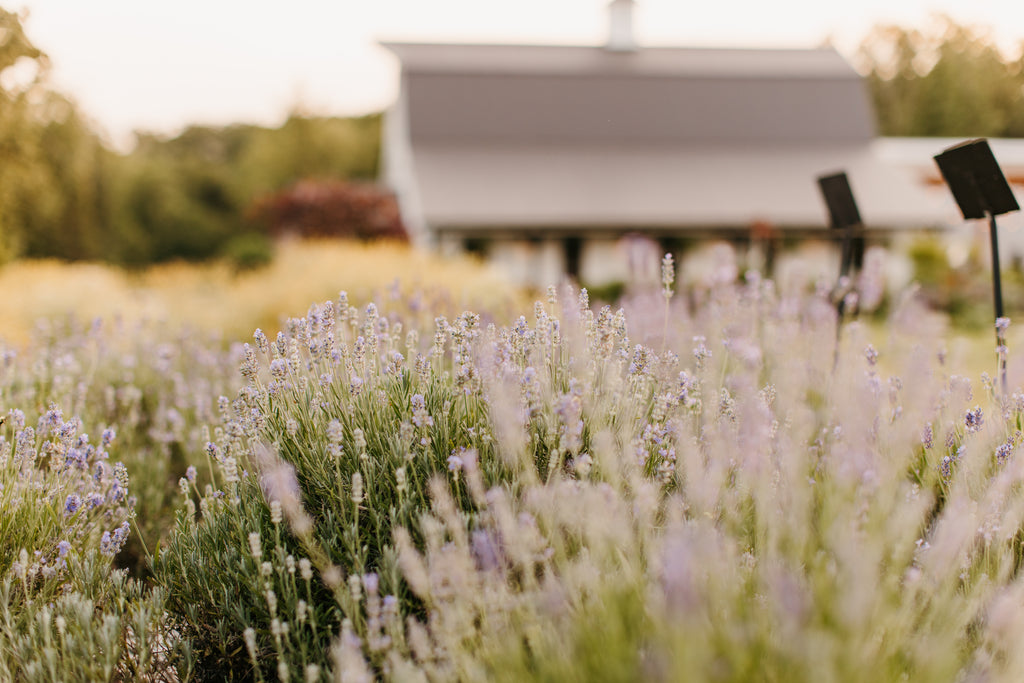
Lavender is truly our favorite herb here at Long Row Lavender. The versatility and beauty of the plant captivates us and has motivated our business from the beginning. Each variety has opened our eyes to the vast diversity of this herb. Lavender has many different species including English, Spanish, French, as well as hybrids and many more. The differing varieties bring unique colors, shapes, sizes, scents, and even flavor profiles!
As you may know, Missouri isn’t known for its optimal growing conditions for lavender. This herb thrives in a Mediterranean climate which is dry and arid with sandy, loamy soil. Here in Missouri, we have a thick, heavy summer humidity that puts stress on our plants. This, along with our clay soil, makes lavender a tender perennial to cultivate in the Midwest. Along our journey of growing the herb, we’ve experienced loss and abundance while learning so much. Here are the lavender varieties we have grown over the years.
Hidcote Blue – an English variety, this plant resides in one of our raised beds on the farm. Hidcote blue is notable for its short stem and dark purple color. With the help of soil remedy, this plant has withstood our humidity, rain, clay, and harsh winters. Hidcote blue blooms during the first two weeks of June – making it our first lavender to bloom every year!
Munstead – another English variety, residing alongside our Hidcote blue, Munstead shares the short stem of Hidcote with a much lighter purple color of bloom. Munstead also shares a bloom time with Hidcote. Our Munstead and Hidcote Blue have been in a raised bed together for years, thus you can hardly tell them apart as the pollinators have crossbred these varieties.
Royal Velvet – No longer grown on the property - this English lavender varies from the other two, as the blooms are much fuller and it has a striking dark purple color. Royal Velvet also varies in scent which is more sweet than camphoric. Much like Munstead and Hidcote blue, this variety has a short stem and sits lower to the ground.
Melissa - No longer grown on the property - Melissa is yet another English variety. This beautiful plant blooms a light pink. Like the other English varieties, Melissa has a short stem and sits low to the ground. This variety carried a citrus scent and peppery flavor.
Phenomenal – (lavendula x intermedia) a hybrid variety that makes up close to 80% of all the lavender grown at Long Row. Phenomenal is bred specifically for our climate and soil type and has proven itself capable of surviving once it grows past its infancy. Each stem is about 24” long and blooms a lovely stereotypical purple color with a lovely, fresh lavender fragrance. This lavender typically blooms in mid June, making our U-Pick events a wild success!
Sensational – also a hybrid, Sensational and Phenomenal lavender are in the same “lavender family” bred to do well in our climate and soil. While Sensational and Phenomenal are very similar, they differ ever so slightly in color and bud size– with Sensational blooming darker and with thicker blooms.
Edelweiss - Edelweiss is our most unique variety, blooming white in color. Edelweiss is incredibly fragrant and resides in the hybrid family of lavenders. Its long stems, and striking contrast in color make it a fan favorite around the farm. Edelweiss is one of our “late” bloomers - making its appearance in late June/early July.
Provence - only a few of these plants reside on the property, and are located in one of our raised beds. Solely representing the french variety, Provence is a light heather/gray purple, with delicate looking blooms.
Fern Leaf – our only annual variety of lavender, you will find fern leaf in our window boxes and garden beds. Their showy blooms will last from Spring to the first frost. Fern leaf lavender does not carry the typical lavender fragrance; but what they lack in scent, they make up for in their ability to provide blooms throughout the summer..
Believe it or not, we’re only scratching the surface of the available lavender as there are 450 different varieties of this beautiful herb! We love this subject, and hope you have enjoyed learning what we grow on the property. Next June, make sure to stop by and see some of these varieties for yourself.
